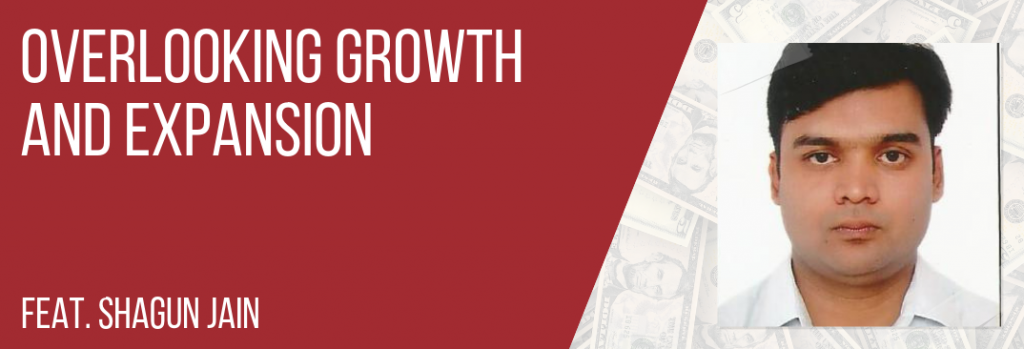Ep19: Shagun Jain – Overlooking Growth and Expansion

Listen on
Apple | Overcast | Stitcher | Spotify | Other
Guest profile
Shagun Jain holds a Master’s degree in Management Studies (MBA) from Jamnalal Bajaj Institute (JBIMS), Mumbai specializing in Finance. He is also Chartered Accountant from the Institute of Chartered Accountants of India (ICAI).
His professional career exposed him to sales, research and consulting resulting in a rare blend of expertise in the financial services space. He worked as a relationship manager with Standard Chartered Bank in Transaction banking, handling corporate clients across industries and across regions like Mumbai and Delhi. After that, he moved to McKinsey and focused on strategy building and PE due diligence for the banking sector in India.
He currently works at Kotak Mahindra bank and manages transaction banking for one of the largest verticals – CIB at the bank. He maintains a keen interest in equities with special attention paid to turnaround stories, special situations & mispriced stocks.
In this episode, Shagun Jain shares how he got carried away investing in the retail stocks, how he stopped and rethink when he lost 90% of his investment value and eventually how he reboot back again.
“I took an undue risk. I thought that focusing on one investment can be a life-changing investment.”
Shagun Jain
Topics Covered:
01:00 – Shagun Jain’s professional background
03:30 – His worst investment story: beating the market, pioneering the retail space, overlooking free cash flow for growth expansion, ballooning companies debt despite the retail boom
06:57 – The fall of the consumer spending, incremental cost of capital not serviced by the incremental revenue
09:18 – No exit strategy in place, no stop loss plans
10:22 – Summary of the lessons he learned from his investment experience
12:13 – History of the dividend of the retail stock
12:45 – Andrew’s takeaways from Shagun Jain’s story of loss
15:45 – Shagun’s actionable advice to help people avoid making the same investment mistake: I think cash flows are the most important metric to look at.
Main Takeaways
- Lesson 1: “If a company is using debt to expand you will have to see how the capital is. Look at the margins and the incremental margin on the new business being generated should be substantially more than the cost of capital.”– Shagun Jain
- Lesson 2: “The company should have free cash flows. Operating cash flows are better. There must be some amount of free cash flows which will then service your debt.”– Shagun Jain
- Lesson 3: “You’ve got to research from the beginning to the end on every single thing that you invest in.”– Andrew Stotz
- Lesson 4: “The concept of stop loss. I don’t like the word stop loss because it’s so negative. I like the word preserve capital. And as I look at it basically, there’s a point I do a rolling stop loss meaning as the share price goes up, I recalculate that stop loss on a three-month basis. Every three months, I do that and then I look at between 15%- 25% percent stop losses based upon that.”– Andrew Stotz
- Lesson 4: “The simplest way to measure the cash flow of a company is the amount of dividend that you receive. If you receive a dividend that is the most real of real cash flows and so therefore sometimes for less sophisticated investors that aren’t going to do a free cash flow calculation.”– Andrew Stotz
Connect with Shagun Jain:
Andrew’s books
- How to Start Building Your Wealth Investing in the Stock Market
- My Worst Investment Ever
- 9 Valuation Mistakes and How to Avoid Them
- Transform Your Business with Dr.Deming’s 14 Points
Andrew’s online programs
- Valuation Master Class
- Women Building Wealth
- The Build Your Wealth Membership Group
- Become a Great Presenter and Increase Your Influence
- Transform Your Business with Dr. Deming’s 14 Points

